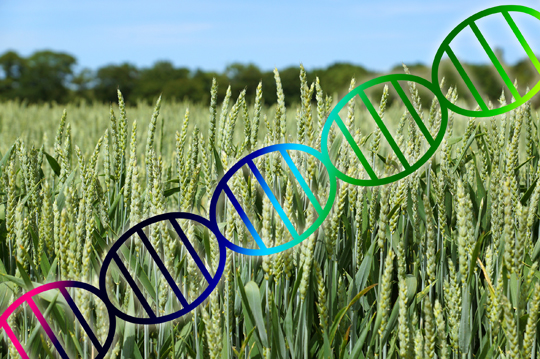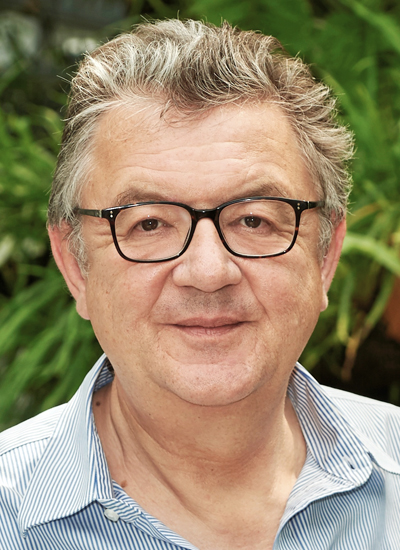Safety Is What’s Important, Not How Things Are Developed
Freiburg, Nov 08, 2018
In the summer of 2018 the European Court of Justice decided that plants that have been modified with the modern gene-editing technology CRISPR-Cas will now be subject to strict regulations. Prof. Dr. Ralf Reski, Professor of Plant Biotechnology, is therefore calling for lawmakers to draw up new regulations. In an interview with Annette Kollefrath-Persch he explained the possible uses and scientific and economic benefits of CRISPR-Cas.

Mr. Reski, The Court of Justice of the European Union (CJEU) has now decided that the new CRISPR-Cas method should be treated as a form of genetic engineering. The organisms modified using this method are therefore subject to the same regulations for certification and classification that apply to older, more conventional methods of genetic engineering. As a plant biotechnology expert, what do you think of this court decision?
Ralf Reski: The interesting thing about this court decision is that it also confirms the regulations for more traditional breeding methods. Although plants with mutations caused by radioactivity or chemical substances are classified as genetically modified organisms (GMOs), they are still not subject to the strict regulations of the genetic engineering law. This is despite the fact that there are very many of these products out there, including in stores selling organic produce. They’ve been on the market for such a long time though and are considered safe, so the argument is that no new regulations are required. However, the recent court decision doesn’t take into account the fact that plants have been produced through genetic engineering that have been on the market for about 30 years now in North and South America and have not shown any negative effects.
Is the CRISPR-Cas method a modern term for genetic engineering?
No. What's new about CRISPR-Cas is that very targeted changes are made to the plant’s genes that can’t be distinguished from natural mutations. That way, we can modify genes to give plants new properties that are beneficial, or we can get rid of ones that aren’t. In comparison, traditional genetic engineering can be used to insert the genes of another organism into a plant, like Golden Rice, to produce provitamin A in the rice kernel. Or it can be used to modify moss, so that it produces human proteins for therapy purposes, which is what we’re doing in our lab.
Do you think the recent decision was wrong from a scientific point of view?
I don’t want to criticize the judges’ decision, but I do want to call on lawmakers to ensure that we finally have clear laws and regulations in place. What scientists do with CRISPR-Cas – in other words, modifying genes – happens naturally every day out on the fields and inside our bodies. The CJEU’s decision has created the absurd situation that a new plant variety may be imported from the US, for example, but not even scientists can tell whether it’s been bred in the traditional way or modified using CRISPR-Cas. Yet one of these two methods is supposed to be strictly regulated in Europe. It’s completely absurd. That’s why all the expert societies are so up in arms. Another proof of the craziness of all this is that all types of sweet potatoes today can be traced back to a single wild type of sweet potato that changed naturally thousands of years ago, meaning it was genetically transformed through the same Agrobacterium that we use today in traditional genetic engineering.

Ralf Reski wants to call on lawmakers to ensure to have clear laws and regulations. Photo: livMatS
What regulations do you think would be sensible?
The most rational thing would be to regulate how safe a product is, regardless of how it was developed. It’s the same with cars. We don’t care if a car was made by a craftsman or on an assembly line; what we care about is if it's clean, safe, and efficient. We’re facing the global challenge of having to feed an ever growing number of people in an ecologically sustainable way with an ever shrinking amount of arable land. To not use efficient technologies in this situation is irresponsible. To put it bluntly, it’s easy for us here in Europe to discuss whether we should use these technologies, while we ignore the food problems that other countries are forced to deal with.
What are the benefits of the CRISPR-Cas method of plant breeding compared to previous methods?
The original methods of creating mutations through radioactivity or chemicals, which can cause cancer in humans, were completely without direction. Breeders took painstaking efforts to cross and reproduce plants that had the characteristics they desired over and over again. They did not research what genes were being modified – in other words, what off-target results were occurring. CRISPR-Cas is a biological method that originally evolved in bacteria as a way of fighting viruses. It can be used in all organisms to change specific genes in order to introduce new qualities or eliminate old ones. As I already mentioned, it’s no longer possible to determine whether a genetic modification has occurred naturally or in a laboratory. This means we’ve taken a huge step towards reproducing the natural process of evolution.
But isn’t the new technology better from an economic and business point of view?
Yes. CRISPR-Cas is considerably more efficient and therefore more cost-effective than traditional methods. Three recent articles in science journals have demonstrated that what can be achieved through traditional breeding in 30–40 years – that is, the modification of three or four genes in a plant – can be accomplished in less than one year with new technologies.
Will there still be off-target effects?
When we use CRISPR-Cas, we always target a specific gene. Because of the knowledge we have today about the different genomes, the process has become more precise. That having been said, sometimes other genes may become affected by accident. There is not a single process – be it natural or technological – that is always 100% free of mistakes. However, thanks to modern methods, it is now possible to identify unintentional modifications, in which case that particular plant will not be bred any further.
CRISPR-Cas is not only used in plant research. However, it caused unintentional mutations in experiments using the cells of mice and humans, according to a British study. Could it be that this method causes more health problems than it cures?
There are also off-target effects in cases such as these, of course, which is why only those cells that show no such effects should be allowed to be used for further development. However, the fundamental question is whether we want to use these technologies to help cure human disease. Let’s take HIV, for example. The virus becomes integrated into the human genome. People with HIV today can live much longer lives with medication. Theoretically, however, we could also edit the virus out of the genome using CRISPR-Cas, meaning the patient would be symptom-free and would not have to take any more medications which have side-effects. This is why we need an ethical evaluation of these cases.

